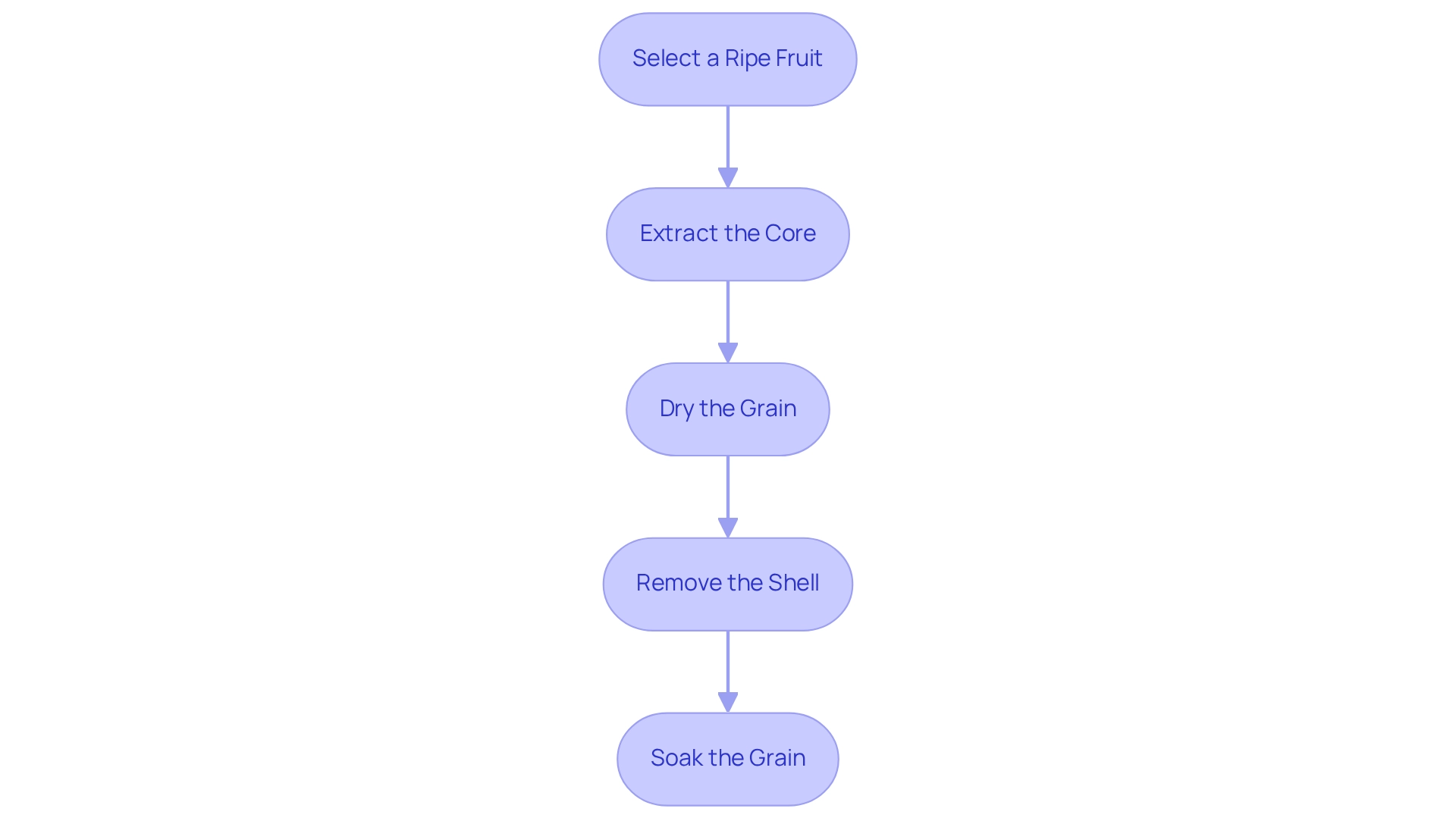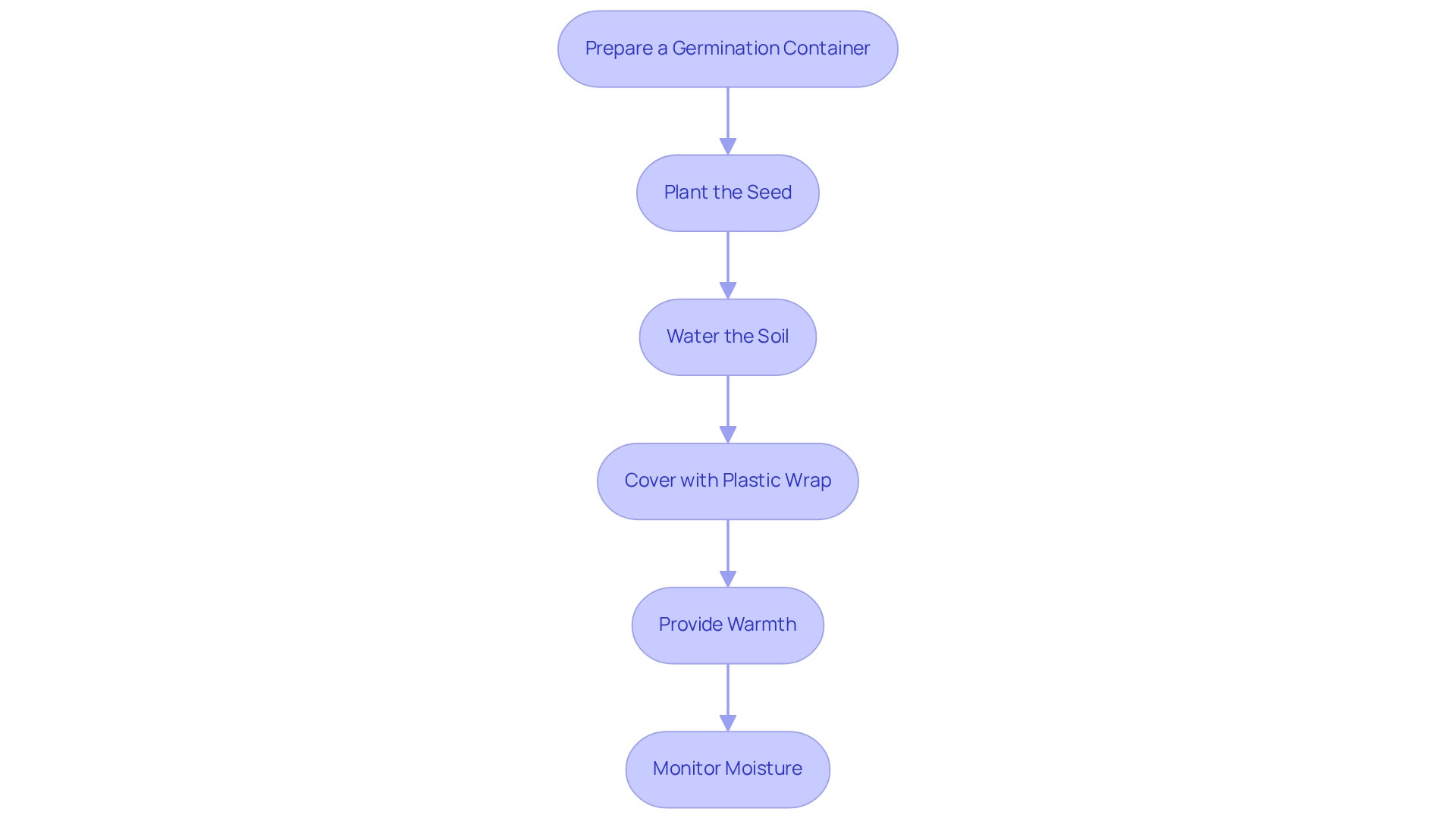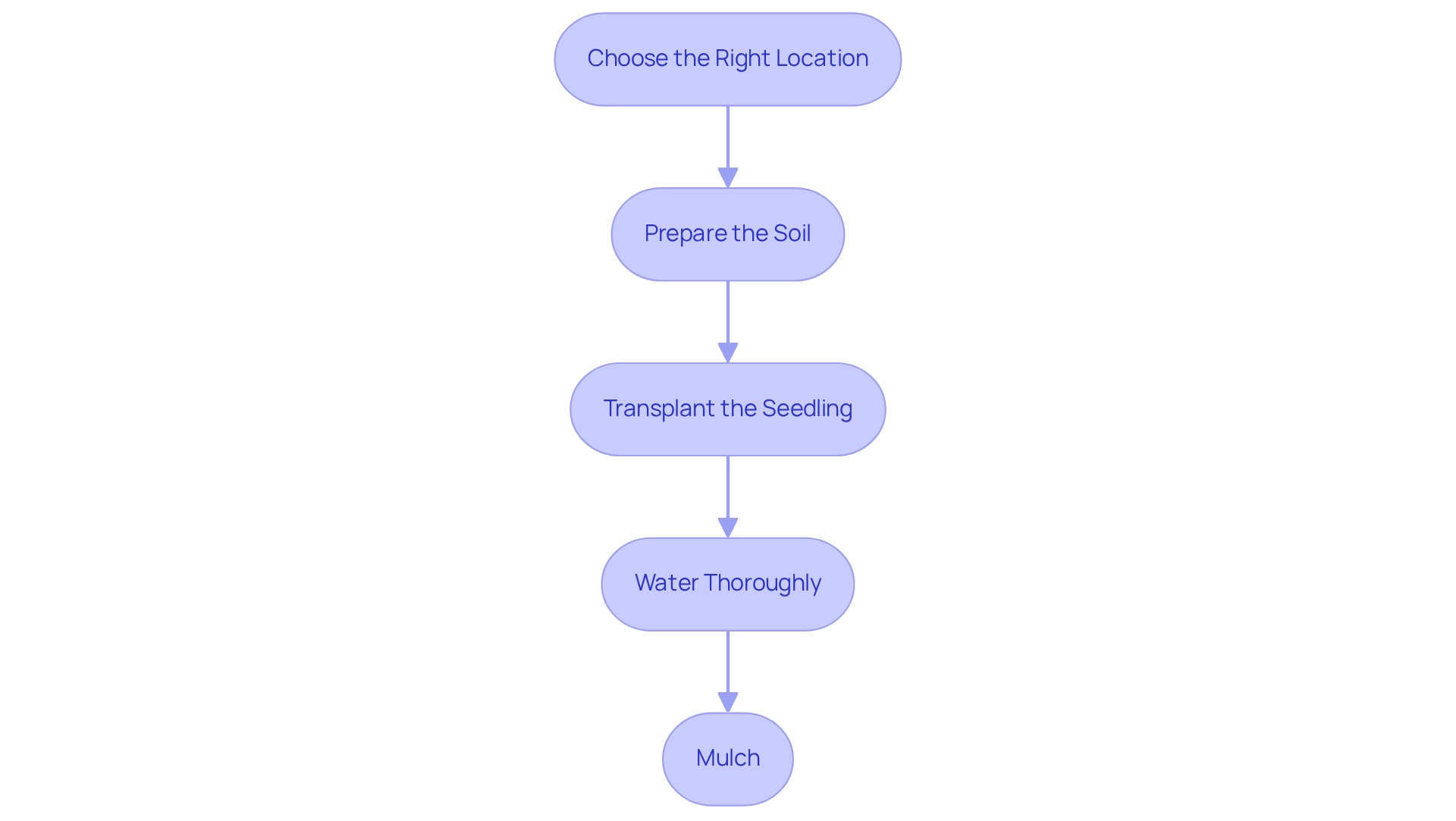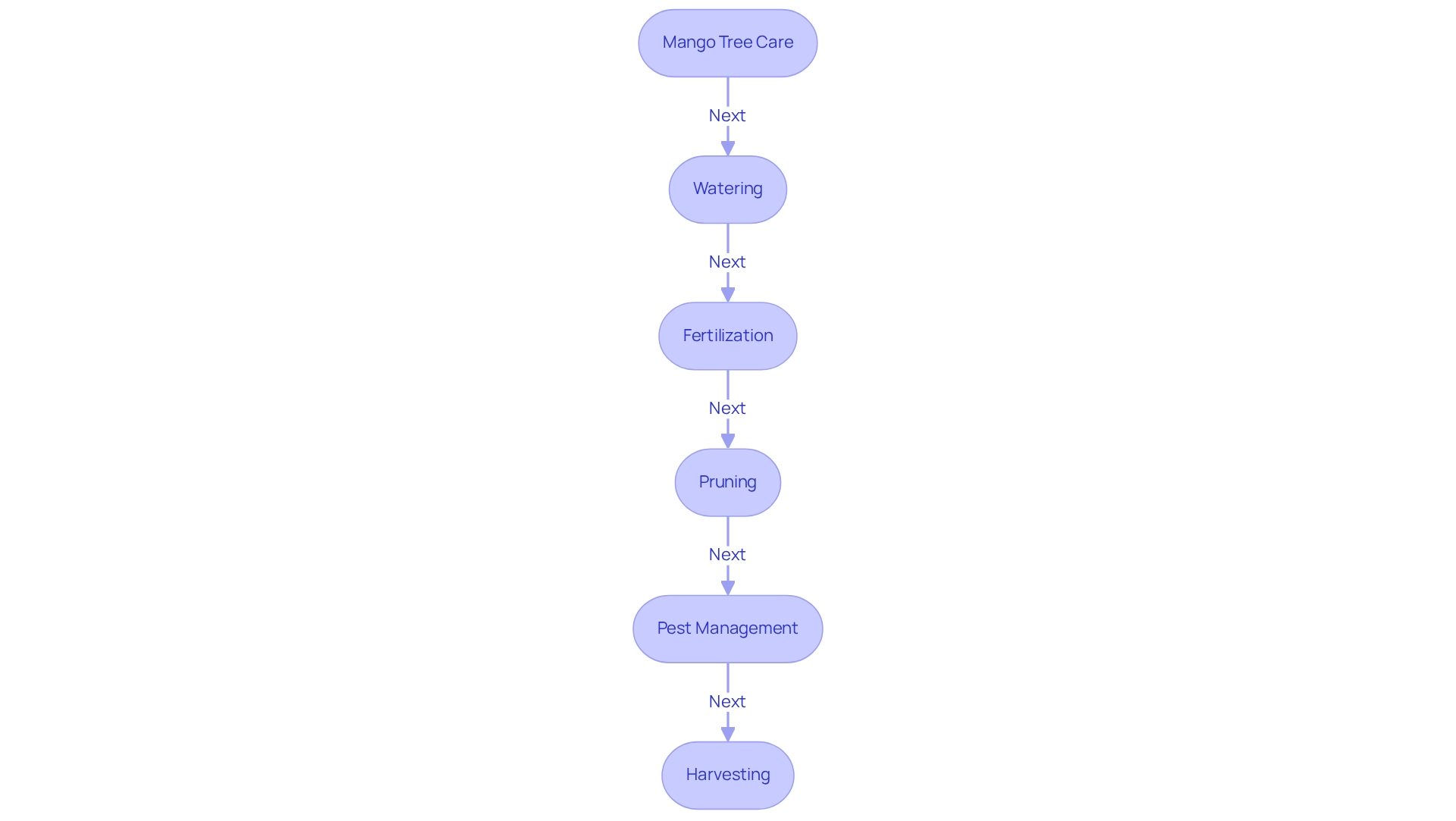Cultivating an Angie mango tree can be a truly rewarding endeavor. Not only does it offer the joy of gardening, but it also promises the delightful taste of delicious fruit in the years to come. However, we understand that embarking on this journey requires careful planning and attention to detail. From selecting quality seeds to providing optimal growing conditions, each step is crucial for the tree's development.
the essential materials needed, the proper techniques for seed germination, and the ongoing care necessary to ensure a thriving mango tree. With the right approach, you can transform your outdoor space into a fruitful haven. Imagine reaping the benefits of your labor while enjoying the sweet rewards of homegrown mangoes. Let's embark on this journey together, nurturing both your garden and your passion for gardening.
Growing an Angie mango tree can be a rewarding experience, and understanding the essential steps can make all the difference. This article outlines five key steps that will guide you on this nurturing journey:
- Gathering materials
- Preparing the seed
- Germinating it
- Transplanting the seedling
- Maintaining the tree
Each step is carefully supported by specific recommendations and practices that highlight the importance of using quality materials, creating optimal conditions, and providing consistent care.
We know that gardening can sometimes feel overwhelming. Perhaps you've faced challenges in the past, or maybe you're unsure where to begin. Rest assured, you're not alone. By focusing on these five steps, you can cultivate a thriving mango tree that not only grows beautifully but also produces delicious fruit. Remember, the journey of gardening is as important as the outcome, and every little effort counts toward creating a flourishing garden.
As you embark on this journey, consider the materials you’ll need. Quality seeds and proper tools lay the foundation for success. Preparing the seed is the next crucial step, requiring patience and care. Once germinated, transplanting the seedling into the right environment is vital for its growth. Finally, maintaining your tree with love and attention will ensure it thrives for years to come.
So, take a deep breath and embrace the process. With each step, you’re not just growing a tree; you’re nurturing a connection to nature. Let’s get started on this beautiful adventure together!
Introduction
Cultivating an Angie mango tree can be a truly rewarding endeavor. Not only does it offer the joy of gardening, but it also promises the delightful taste of delicious fruit in the years to come. However, we understand that embarking on this journey requires careful planning and attention to detail. From selecting quality seeds to providing optimal growing conditions, each step is crucial for the tree's development.
This guide is here to support you, outlining the essential materials needed, the proper techniques for seed germination, and the ongoing care necessary to ensure a thriving mango tree. With the right approach, you can transform your outdoor space into a fruitful haven. Imagine reaping the benefits of your labor while enjoying the sweet rewards of homegrown mangoes. Let's embark on this journey together, nurturing both your garden and your passion for gardening.
1. Gather Essential Materials for Planting
Before planting your angie mango tree, it's essential to gather a few key materials that will set you up for success. We understand that starting a gardening project can feel overwhelming, but with the
right supplies at hand, you can confidently embark on this journey.
-
Quality Fruit Pits: Begin by sourcing fresh pits from a reputable supplier like Everglades Farm, known for their commitment to quality and sustainability. This choice lays a strong foundation for your plant's growth.
-
Potting Soil: Opt for a well-draining potting mix specifically designed for tropical plants. This is vital for healthy root development, ensuring your plant thrives.
-
Containers: Select pots with drainage holes; a 5-gallon container is ideal for starting your fruit-bearing plant. Proper drainage is crucial for preventing root rot.
-
Watering Can: Use a watering can with a spout for precise watering. This helps to prevent over-saturation, which can be a common concern for new gardeners.
-
Plastic Wrap: Consider using plastic wrap to create a mini-greenhouse effect during germination. This promotes a warm and humid environment, giving your seeds the best chance to sprout.
-
Labels: Keep track of your planting dates and varieties by labeling your pots. This simple step can help you stay organized and engaged with your plants' progress.
Having these materials prepared will streamline the planting process and ensure you have everything you need right at your fingertips. Remember, high-quality planting materials are especially crucial as they significantly affect the development and output of your angie mango tree. By following these optimal gardening practices, you're not just planting a tree; you're nurturing a living thing that will bring joy and sustenance for years to come. So, take a deep breath, gather your supplies, and let's get started on this rewarding journey together!
2. Obtain and Prepare the Mango Seed
To successfully prepare your mango seed for planting, let’s walk through these essential steps together:
- Select a Ripe Fruit: Begin by choosing a fully ripe mango. The flesh should feel soft and sweet, as mature fruits produce kernels with improved germination potential.
- Extract the Core: Gently cut the mango and remove the core from the pit. Rinse it under running water to eliminate any fruit residue, which can hinder germination.
- Dry the Grain: Allow the grain to dry for one to two days in a shaded area. This drying procedure is crucial for preparing the grain for the next stages.
- Remove the Shell: Once dry, carefully crack open the hard outer shell to access the inner core. Be cautious to avoid harming the plant, as this can impact its viability.
- Soak the Grain: Immerse the grain in water for 24 hours to kick-start the germination process. Research suggests that soaking seeds can significantly boost germination rates. One study even showed that adding fruit seeds at a concentration of 40% enhanced various agricultural metrics, including digestibility and economic efficiency, which can help in cultivating an angie mango tree.
By following these steps, you’ll increase your chances of successful germination, allowing you to nurture a flourishing angie mango tree in your garden. A case study on the vigor index of seedling varieties found that proper preparation can lead to higher vigor indices, emphasizing the importance of using local cultivars with specific potting media for better productivity. Furthermore, as observed by Gebregiorgs et al., ensuring proper seedling development is crucial for successful cultivation. These practices are essential for any aspiring gardener, and I’m here to support you every step of the way.
3. Germinate the Mango Seed
To successfully germinate your mango seed, let's walk through these essential steps together:
- Prepare a Germination Container: Begin by using a small pot filled with a well-draining potting mix. This will help retain moisture and ensure proper aeration, setting the stage for your seed's journey.
- Plant the Seed: Gently place the seed about one inch deep into the soil, making sure the pointed end faces downward. This simple action promotes healthy development.
- Water the Soil: Lightly water the soil until it feels moist but not overly saturated. Remember, too much water can hinder germination, so finding that balance is key.
- Cover with Plastic Wrap: To maintain humidity, cover the pot with plastic wrap. This creates a warm microenvironment, perfect for your seed to thrive.
- Provide Warmth: Position your pot in a warm area, ideally keeping the temperature between 70°F and 85°F (21°C to 29°C). This warmth is crucial for optimal seed development and will help your plant feel right at home.
- Monitor Moisture: Check the soil daily to ensure it remains moist. It’s also important to remove the plastic wrap for a few hours each day to allow for air circulation, preventing any unwanted mold.
By incorporating proper maintenance and suitable climate conditions, you can significantly enhance the longevity and health of your plants, paving the way for a fruitful harvest in the future. Did you know that the minimum vigor index (VI) for the Keitt cultivar is 2.43 g? This indicates strong growth potential when optimal conditions are met. After about 2-3 weeks, keep an eye out for the sprout emerging—this is the exciting start of your tree's journey. Remember, as Gloria Gaither beautifully stated, '
Love is the seed of all hope.' Nurturing your fruit seed is the first step toward cultivating a fruitful relationship with your garden.
4. Plant the Seedling in Optimal Conditions
Once your mango seedling has reached about 6 inches in height, it’s time to transplant it into optimal conditions. Let’s walk through this nurturing process together:
- Choose the Right Location: Start by selecting a sunny area in your garden or a larger pot that receives full sunlight for at least 6-8 hours daily. Mango plants truly flourish in bright environments, making this step essential for their development. They prefer USDA Hardiness Zones 9-11 and thrive in humid conditions, which are crucial for their growth.
- Prepare the Soil: Next, enhance the soil by mixing in organic compost to improve drainage and nutrient levels. Mango plants favor well-draining soil with a pH range of 5.5 to 7.5, promoting healthy root development and ensuring they can flourish.
- Transplant the Seedling: Gently remove the seedling from its germination pot, ensuring minimal disturbance to the roots. It’s important to plant it at the same depth it was growing in the pot to avoid transplant shock, which can be stressful for your little plant.
- Water Thoroughly: After planting, water the seedling generously to help settle the soil around the roots. This initial watering is vital for establishing a strong foundation, so don’t hesitate to give it a good drink.
- Mulch: Finally, apply a layer of mulch around the base of the seedling to retain moisture and suppress weed development. This practice not only saves water but also controls soil temperature, creating a nurturing environment for your fruit plant.
By following these steps, you significantly improve your plant’s chances of developing a strong root system, laying the groundwork for productive growth. Remember, afterward, trim only to eliminate damaged or unhealthy plant material to preserve the vitality of your plant. You’re doing a wonderful job nurturing your angie mango tree seedling—keep it up!
5. Maintain and Care for Your Mango Tree
To ensure your mango tree thrives, let's explore some essential maintenance tips together:
- Watering: Water your plant deeply once a week, allowing the soil to dry slightly between applications. Consistent moisture is crucial, especially in regions with tropical climates, where rainfall can vary significantly. Understanding your local climate can help you adjust your watering schedule effectively.
- Fertilization: Apply a balanced fertilizer designed for fruit plants every 6-8 weeks during the growing season. Research shows that sufficient potassium levels in the soil, particularly around 40.0 mg/kg, can improve yield and promote optimal development and fruit production.
- Pruning: Conduct annual pruning to remove dead or diseased branches and to shape the plant for improved air circulation. This practice not only promotes healthy growth but also reduces the risk of pest infestations.
- Pest Management: Regularly examine your plant for pests such as aphids or scale. If you spot any, consider using organic insecticidal soap to handle infestations effectively, ensuring the well-being of your plant without harmful chemicals.
- Harvesting: Exercise patience; this fruit typically takes 3-5 years to bear. Harvest when the fruit is slightly soft and emits a fragrant aroma, indicating ripeness.
As William Blake wisely observed, "A fool does not perceive the same plant that a wise man perceives." By following these care practices, your angie mango tree will thrive, yielding delicious fruit for many years. Remember, Everglades Farm's commitment to quality and customer satisfaction emphasizes the importance of these practices, ensuring that your gardening efforts yield fruitful results.
Conclusion
Successfully cultivating an Angie mango tree is a journey filled with joy and fulfillment, beginning with gathering essential materials and extending through ongoing care. By starting with high-quality seeds, appropriate potting soil, and the right containers, you lay the groundwork for a fruitful gardening experience. Preparing the mango seed is a crucial step, as it enhances germination potential, vital for establishing a robust tree.
Once your seedling is ready, planting it in optimal conditions allows it to receive the sunlight and nutrients necessary for healthy growth. This means choosing a well-draining location, enriching the soil with organic compost, and ensuring adequate watering to establish a strong root system. Remember, consistent maintenance is key; regular watering, fertilization, and pest management are essential to nurture your tree as it matures.
Ultimately, patience is your greatest ally in this rewarding journey. With careful attention and diligence, your Angie mango tree will not only thrive but also provide delicious fruits for years to come. By following these outlined practices, you can transform your gardening efforts into a fruitful endeavor, enjoying the sweet rewards of homegrown mangoes while deepening your connection to nature. The journey of growing a mango tree is a testament to the beauty of gardening, where every effort contributes to a bountiful harvest. So, let’s embrace this adventure together and watch our gardens flourish!
🥭 Bring Home the Sweetness of Angie Mango
Whether you’re planting in a backyard or container, the Angie Mango Tree is a reliable, delicious addition to your garden.
Grow a tropical escape—right at home!
Frequently Asked Questions
What materials do I need before planting an angie mango tree?
You will need quality fruit pits, well-draining potting soil designed for tropical plants, containers with drainage holes (ideally 5-gallon), a watering can with a spout, plastic wrap for a mini-greenhouse effect, and labels to track planting dates and varieties.
Why is it important to use quality fruit pits?
Using quality fruit pits from a reputable supplier ensures a strong foundation for your plant's growth, significantly affecting its development and output.
What type of potting soil should I use?
You should opt for a well-draining potting mix specifically designed for tropical plants to promote healthy root development.
Why are drainage holes important in containers?
Drainage holes are crucial for preventing root rot by allowing excess water to escape, which helps maintain the health of your plant.
How can a watering can help in the planting process?
A watering can with a spout allows for precise watering, which helps prevent over-saturation, a common concern for new gardeners.
What is the purpose of using plastic wrap during germination?
Plastic wrap creates a mini-greenhouse effect that promotes a warm and humid environment, giving seeds the best chance to sprout.
Why should I label my pots?
Labeling your pots helps you keep track of planting dates and varieties, aiding in organization and engagement with your plants' progress.
What steps should I follow to prepare my mango seed for planting?
First, select a ripe mango, extract the core, rinse it, dry the grain for one to two days, remove the shell carefully, and soak the grain in water for 24 hours to boost germination rates.










0 comments